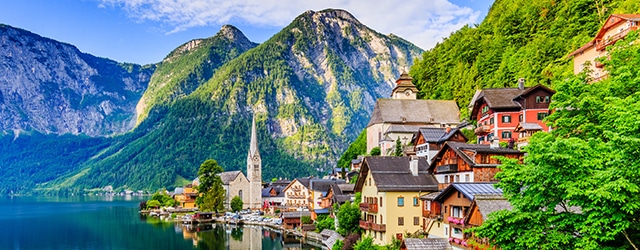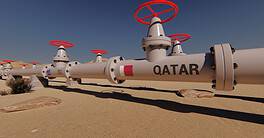Some nations experienceearthquakes and hurricanes frequently, others have high crime or protracted wars—which countries are safest? Global Finance has answers.

The new year is already here and so is the 2019 Global Finance rankingof safest countries in the world. The new rankings feature update sources, an updated formula, and lots of interesting dynamics that affect where countries are ranked.
So which countries are safe, and which are not?
To explain briefly, the safety score for countries equally weighs each of the three factors: war and peace, personal security, and natural disaster risk. The safety score aggregates the indices from these three risks, thus presenting a comprehensive view of safety for each country. This also means that a high level of risk in one factor will have limited effect on the country’s overall ranking. For example,the Philippines is ranked least safe while Yemen is ranked second least safe. This can be attributed to the fact that the Philippines has poor scores in peace, security, and prevalence ofnatural disasters. Yemen’s terrible score is due towarandfamine but the country hasa very low risk of natural disaster. Thus, the Philippines ranks lower than Yemen even though Yemen is a warzone.
Since our safest countries index is data-driven,Global Financedid not include countries like Syria, Iraq, or Afghanistan that were missing fromthe reports our rankings are based on. Including countries that have incomplete or unavailable data would have led to miscalculations and entailed guesswork, which we aimed to avoid.
The countries at the top offer little surprise; they are mostly European countries with developed economies and healthcare systems. In fact, 16 of the top 20 safest countries are located in Europewhile only Qatar, Singapore, New Zealand, and Canada rank in the top 20 without being in Europe. Economic development seems to low risk from military conflict or domestic crime. In essence, these two factors are more controllable than the risk from natural disaster, which is often a function of geography.
However, several important exceptions exist for countries that are economically developed. The U.S. ranks almost exactly in the middle at 65th, well behind its economically developed peers. This is because the risk from violent crime in the U.S. is higher due to the higher rate of homicide, thus lowering the personal safety and security score. The U.S. also has a slightly higher risk from natural disaster simply due to its geographic landscape and size. The U.S. is not alone among economically developed countries with middling scores—Japanranks 43rd, largely due to its high risk from natural disaster.
On the opposite end of the spectrum, the countries that typically rank the lowest usually have a combination of dire threats from all three threats to safety. These countries are often economically developing and are located in areas with a high risk of natural disaster. Countries such as Guatemala, El Salvador, and Bangladesh suffer from earthquakes frequently.Poor economic development in these countries is also associated with less personal safety and security.
Two countriesthat may be surprisesare Russia and Ukraine. Ukraine (116th) has been in the midst of a low-intensity civil conflict since 2014 and joins Russia (108th) as the only two European countries to rank below the U.S. Russia has suffered from high crime as well as threats to peace amidst an economic decline that shows no signs of reversing or halting any time soon. Ukraine also suffered economically and the violence in Eastern Ukraine has not yet abated.
Safest Countries in the World
Global Finance magazine’s safety index factors in risks of natural disaster with crime, terrorism and war to present a more rounded analysis of the world’s safest countries.
Rank |
Country |
Global Finance Safety Index Score |
| 1 | Iceland | 6.16 |
| 2 | Switzerland | 7.01 |
| 3 | Finland | 7.04 |
| 4 | Portugal | 7.07 |
| 5 | Austria | 7.08 |
| 6 | Norway | 7.27 |
| 7 | Qatar | 7.28 |
| 8 | Singapore | 7.34 |
| 9 | Denmark | 7.41 |
| 10 | New Zealand | 7.42 |
| 11 | Canada | 7.42 |
| 12 | Slovenia | 7.44 |
| 13 | Sweden | 7.50 |
| 14 | Czech Republic | 7.68 |
| 15 | Spain | 7.81 |
| 16 | Ireland | 7.82 |
| 17 | Estonia | 7.89 |
| 18 | Australia | 7.95 |
| 19 | Belgium | 7.98 |
| 20 | Germany | 8.09 |
| 21 | United Arab Emirates | 8.21 |
| 22 | Croatia | 8.27 |
| 23 | Oman | 8.34 |
| 24 | Latvia | 8.45 |
| 25 | Lithuania | 8.49 |
| 26 | Slovakia | 8.53 |
| 27 | Poland | 8.54 |
| 28 | Hungary | 8.61 |
| 29 | Mongolia | 8.74 |
| 30 | Bhutan | 8.79 |
| 31 | Netherland | 8.82 |
| 32 | Cyprus | 8.88 |
| 33 | Romania | 8.88 |
| 34 | South Korea | 8.93 |
| 35 | Uruguay | 8.93 |
| 36 | France | 9.01 |
| 37 | Kuwait | 9.10 |
| 38 | United Kingdom | 9.21 |
| 39 | Malaysia | 9.22 |
| 40 | Italy | 9.23 |
| 41 | Botswana | 9.25 |
| 42 | Bulgaria | 9.27 |
| 43 | Japan | 9.49 |
| 44 | Kazakhstan | 9.50 |
| 45 | Morocco | 9.53 |
| 46 | Moldova | 9.58 |
| 47 | Laos | 9.61 |
| 48 | Jordan | 9.67 |
| 49 | Georgia | 9.68 |
| 50 | Argentina | 9.80 |
| 51 | Rwanda | 9.98 |
| 52 | Zambia | 9.98 |
| 53 | Nambia | 10.00 |
| 54 | Saudi Arabia | 10.02 |
| 55 | Bahrain | 10.02 |
| 56 | Bosnia andHerzegovina | 10.04 |
| 57 | Greece | 10.13 |
| 58 | Serbia | 10.14 |
| 59 | Macedonia | 10.24 |
| 60 | Paraguay | 10.25 |
| 61 | Chile | 10.25 |
| 62 | Armenia | 10.25 |
| 63 | Ghana | 10.27 |
| 64 | Panama | 10.27 |
| 65 | United States | 10.30 |
| 66 | Malawi | 10.33 |
| 67 | Bolivia | 10.39 |
| 68 | Tajikistan | 10.48 |
| 69 | Albania | 10.48 |
| 70 | Sri Lanka | 10.53 |
| 71 | Azerbaijan | 10.56 |
| 72 | Gabon | 10.57 |
| 73 | Mauritius | 10.72 |
| 74 | Tunisia | 10.77 |
| 75 | Ecuador | 10.81 |
| 76 | Nepal | 10.82 |
| 77 | Iran | 10.84 |
| 78 | Lesotho | 10.88 |
| 79 | Tanzania | 11.02 |
| 80 | Senegal | 11.08 |
| 81 | China | 11.11 |
| 82 | Algreia | 11.14 |
| 83 | Vietnam | 11.15 |
| 84 | Brazil | 11.15 |
| 85 | Peru | 11.22 |
| 86 | Sierra Leone | 11.26 |
| 87 | Indonesia | 11.27 |
| 88 | Madagascar | 11.32 |
| 89 | Kyrgyzstan | 11.43 |
| 90 | Benin | 11.60 |
| 91 | Uganda | 11.62 |
| 92 | Israel | 11.64 |
| 93 | Zimbabwe | 11.84 |
| 94 | Cote d’Ivoire | 11.85 |
| 95 | Mozambique | 11.91 |
| 96 | Ethiopia | 12.01 |
| 97 | Costa Rica | 12.02 |
| 98 | Nicaragua | 12.06 |
| 99 | Trinidad and Tobago | 12.19 |
| 100 | Thailand | 12.27 |
| 101 | South Africa | 12.33 |
| 102 | Dominican Republic | 12.48 |
| 103 | Egypt | 12.63 |
| 104 | Mauritania | 12.76 |
| 105 | Mexico | 12.82 |
| 106 | India | 12.85 |
| 107 | Turkey | 12.94 |
| 108 | Russia | 12.94 |
| 109 | Cambodia | 12.96 |
| 110 | Jamaica | 13.02 |
| 111 | Kenya | 13.13 |
| 112 | Lebanon | 13.43 |
| 113 | Burundi | 13.46 |
| 114 | Honduras | 13.55 |
| 115 | Cameroon | 13.56 |
| 116 | Ukraine | 13.91 |
| 117 | Congo | 13.96 |
| 118 | Venezuela | 13.98 |
| 119 | Mali | 14.15 |
| 120 | Chad | 14.31 |
| 121 | Bangladesh | 14.66 |
| 122 | Colombia | 14.79 |
| 123 | Pakistan | 14.80 |
| 124 | Nigeria | 14.88 |
| 125 | El Salvador | 15.43 |
| 126 | Guatemala | 15.81 |
| 127 | Yemen | 15.93 |
| 128 | Philippines | 17.70 |
Sources: World Economic Forum, The Global Institute For Peace.



